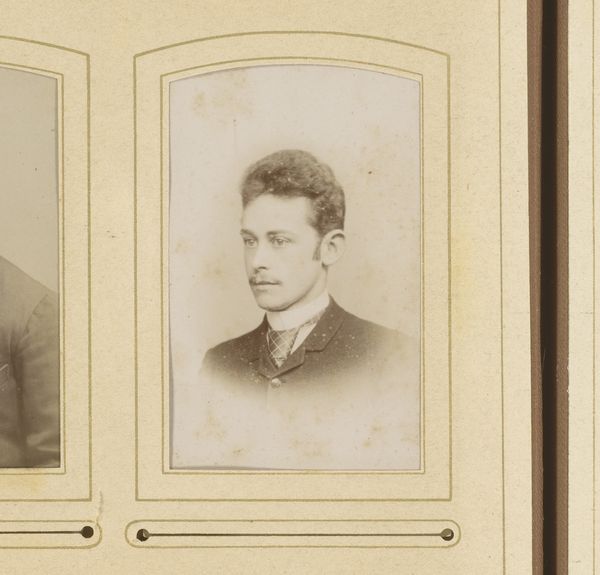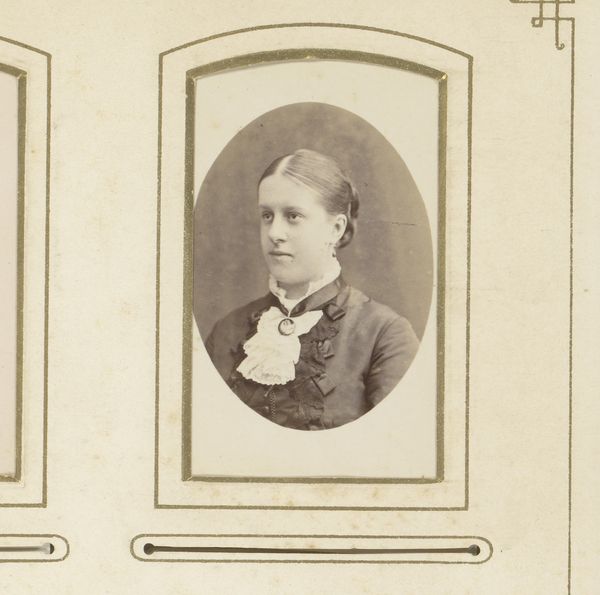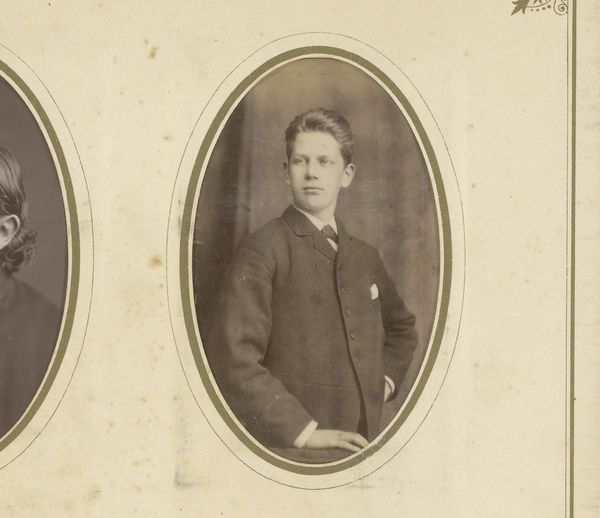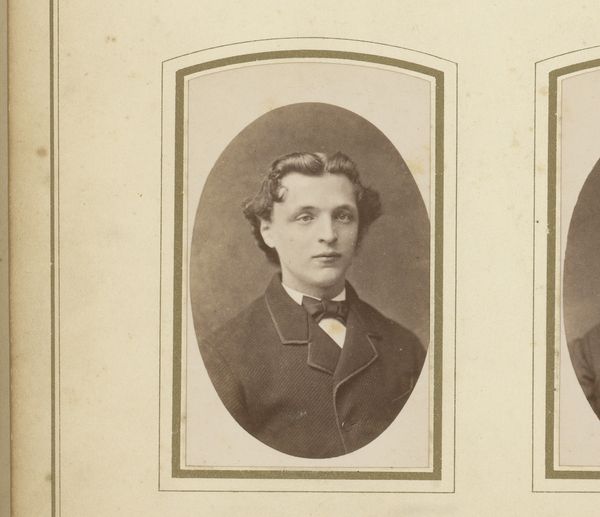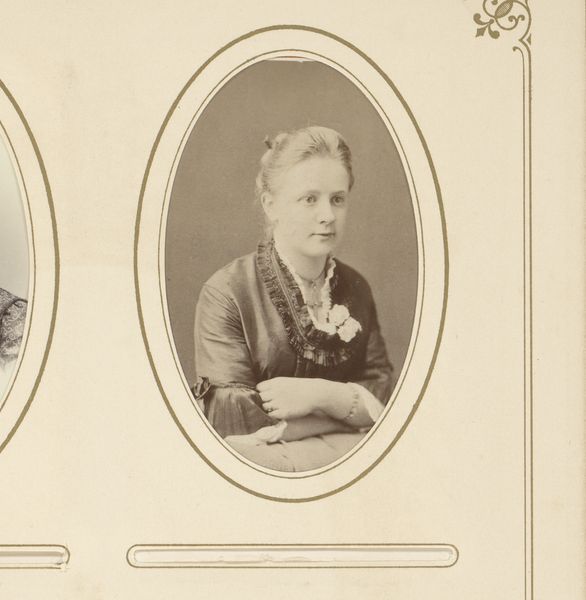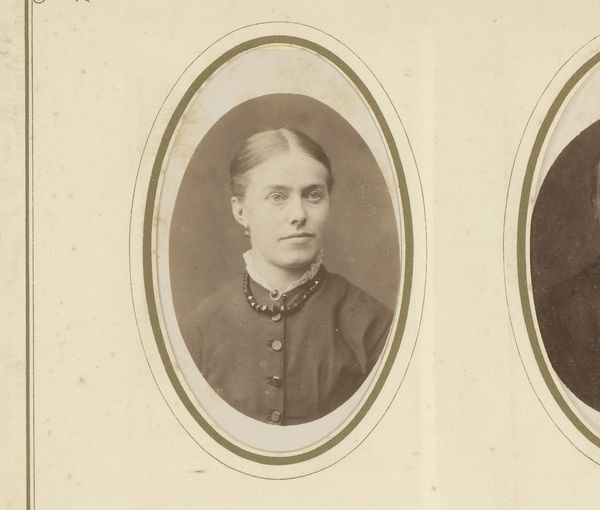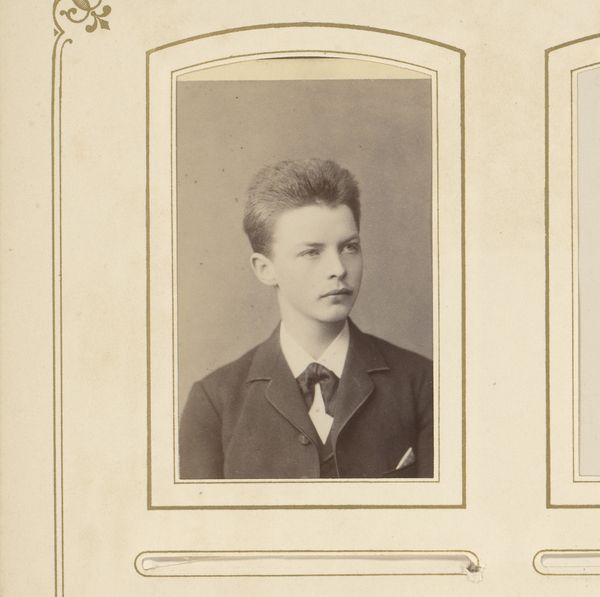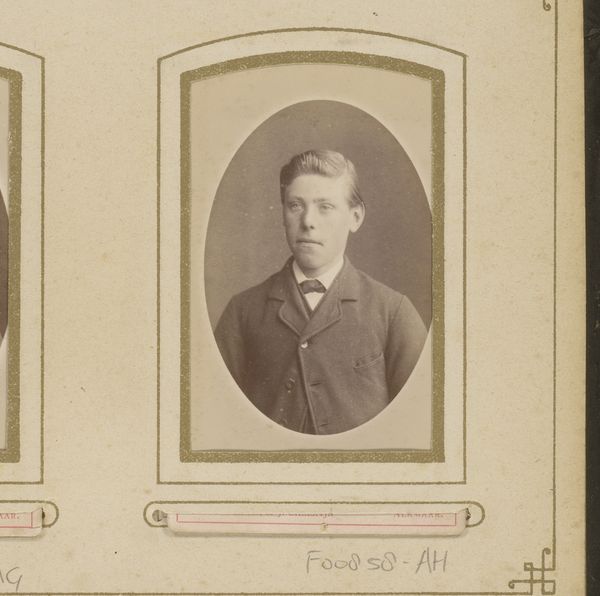
daguerreotype, photography
#
portrait
#
daguerreotype
#
photography
#
historical photography
#
19th century
#
genre-painting
Dimensions: height 85 mm, width 51 mm
Copyright: Rijks Museum: Open Domain
Curator: It’s striking how direct his gaze is in this piece; it draws me in immediately. Editor: Yes, there is an intense stillness. This is a daguerreotype, "Portret van een jonge man," or "Portrait of a Young Man," dating from 1850 to 1900 by Julius jr. Ortgies. These early photographs have a unique silvery sheen. Curator: It’s a little melancholy, don’t you think? The soft focus and muted tones seem to evoke a sense of lost time, of a world fading away. I'm trying to think what feeling or archetypal idea it sparks in me, what is so evocative about this historical fragment? Editor: I agree. Given the context, it is difficult not to reflect upon the many portraits taken during this era, frequently of bourgeois individuals or those aspiring to rise in status through posing. I am intrigued by how he consciously performs this pose in order to adhere to contemporary society. Do you think he considered photography liberating, or something required? Curator: Photography granted more people entry into the arena of portraiture, that is very true, so that symbol makes perfect sense here! The act of freezing a moment has that transformative quality; and it still continues to resonate in today's world, despite the change of format to selfies, as if the symbols of human culture want to live on and outlive us! It might well feel less elitist. What's more accessible than pointing a lens? Editor: Absolutely! And perhaps more ubiquitous with identity. Photography democratized memorialization and provided avenues of representation to social circles from which it was formerly absent. While observing Julius jr. Ortgies’ sitter, one wonders if his picture may have stood for something revolutionary during that time period. Curator: Photography became a very important artifact for subsequent societies who had not been pictured until this point; so indeed! Well, I find I’m left thinking about how new media shapes our collective memory; daguerreotypes gave way to digital photographs but that primal, symbolic urge lives on in how we capture ourselves. Editor: A beautiful conclusion. Thinking about this photograph also drives us to ask complex and important questions of the society and political background that it originated from, which in my opinion, demonstrates great artistry.
Comments
No comments
Be the first to comment and join the conversation on the ultimate creative platform.


